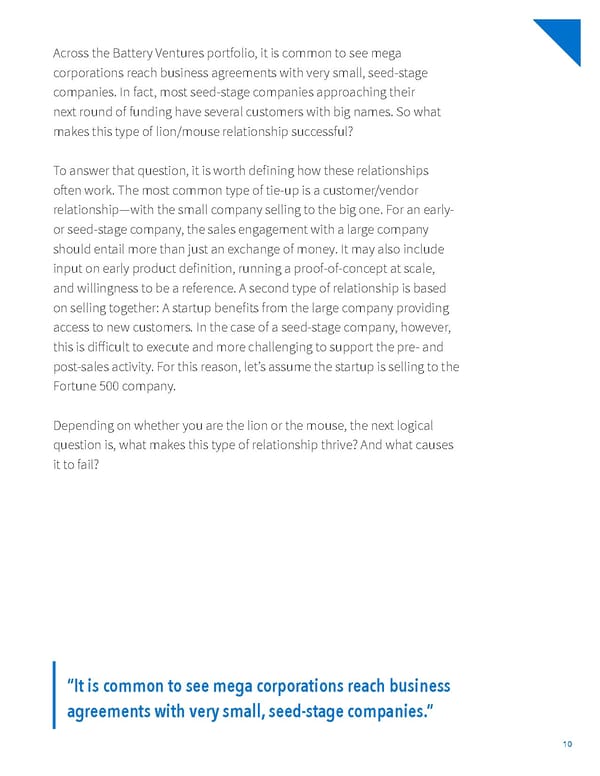Across the Battery Ventures portfolio, it is common to see mega corporations reach business agreements with very small, seed-stage companies. In fact, most seed-stage companies approaching their next round of funding have several customers with big names. So what makes this type of lion/mouse relationship successful? To answer that question, it is worth deifning how these relationships otfen work. The most common type of tie-up is a customer/vendor relationship—with the small company selling to the big one. For an early- or seed-stage company, the sales engagement with a large company should entail more than just an exchange of money. It may also include input on early product deifnition, running a proof-of-concept at scale, and willingness to be a reference. A second type of relationship is based on selling together: A startup beneifts from the large company providing access to new customers. In the case of a seed-stage company, however, this is difficult to execute and more challenging to support the pre- and post-sales activity. For this reason, let’s assume the startup is selling to the Fortune 500 company. Depending on whether you are the lion or the mouse, the next logical question is, what makes this type of relationship thrive? And what causes it to fail? “It is common to see mega corporations reach business agreements with very small, seed-stage companies.” 10
 Guide to Breaking into the Enterprise Market Page 9 Page 11
Guide to Breaking into the Enterprise Market Page 9 Page 11